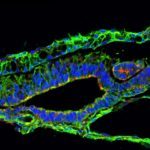Présentation
Embryonic development requires that the behaviour of thousands of cells be finely orchestrated in concert with signalling pathways. While much work has focused on the genetic and transcriptional control of morphogenesis, how cell dynamics and behaviour are controlled has remained more elusive. In order to understand how structures and organs form, it is crucial to understand how cells, the building blocks of tissue, assemble in real time, as morphogenesis is taking place. This achievement has proven difficult due to technical hurdles in higher vertebrates, since embryos, optically opaque, are not easily amenable to static live imaging conditions. Here, we propose to establish the quail (coturnix japonica) as a true genetic animal model to decipher basic rules driving epithelial morphogenesis in amniotes (mammals, birds and reptile). Taking advantage of recent development in genome sequencing and editing technologies, we propose to develop genomic resources and molecular genetic strategies for the quail animal model. By combining such resources and the amenability of quail embryos to live imaging methodologies we will investigate the dynamic mechanisms underlying epithelial morphogenesis during early embryogenesis. Specifically, we will investigate how cell-cycle progression dynamically modulates adhesive and contractile properties of epithelial cells during early embryogenesis, using genetically modified quail embryos. Altogether this studies aims at establishing the quail as the avian genetic model of reference in order to address fundamental mechanisms underlying dynamic morphogenetic mechanisms in higher vertebrates.

